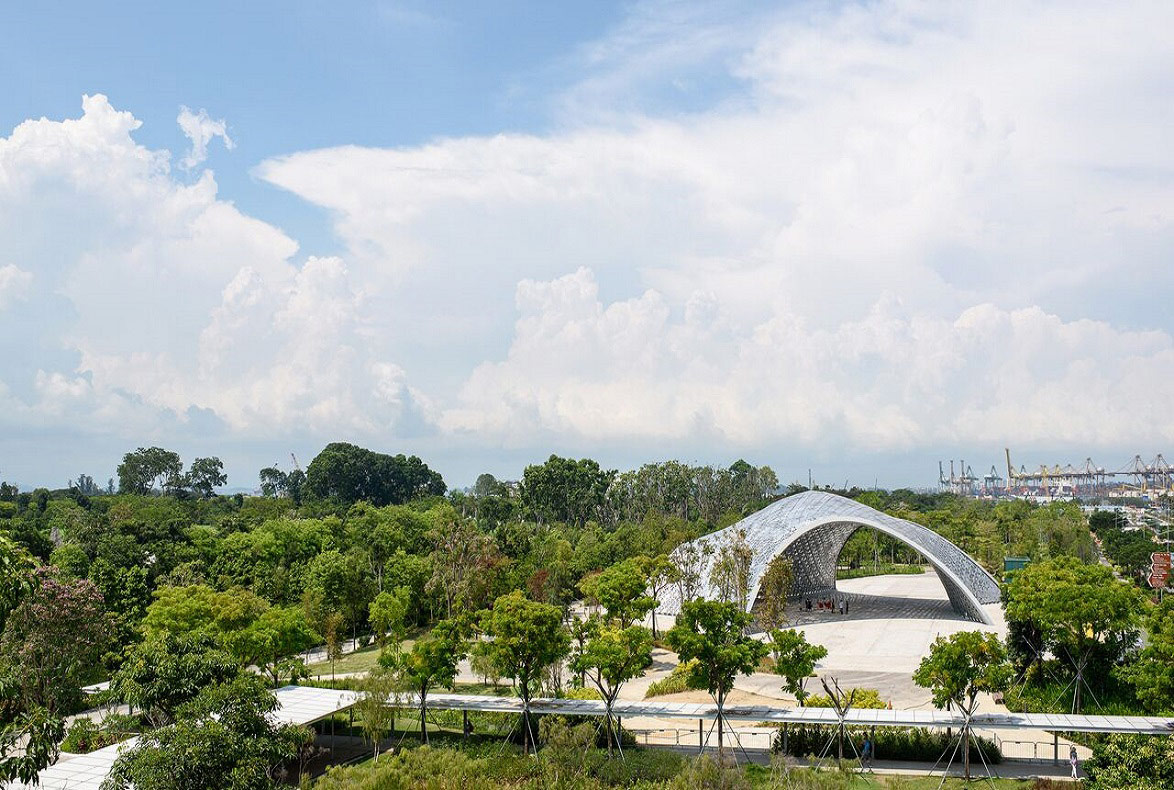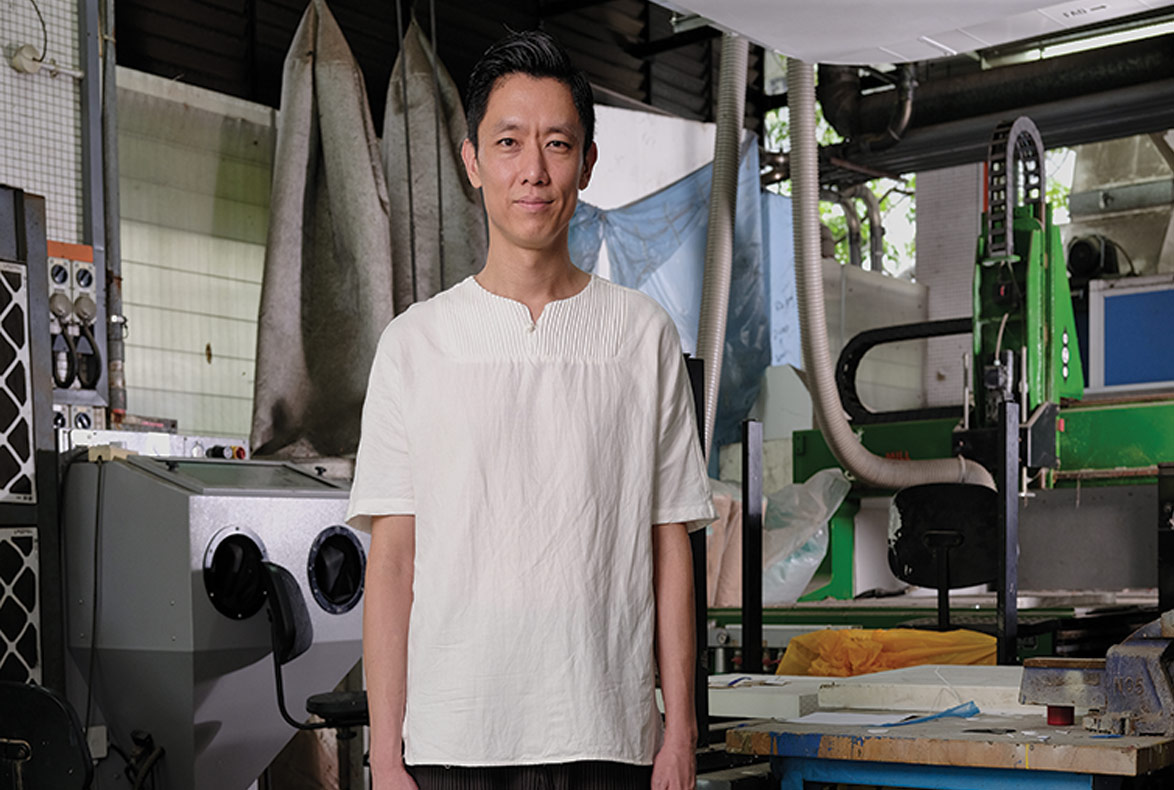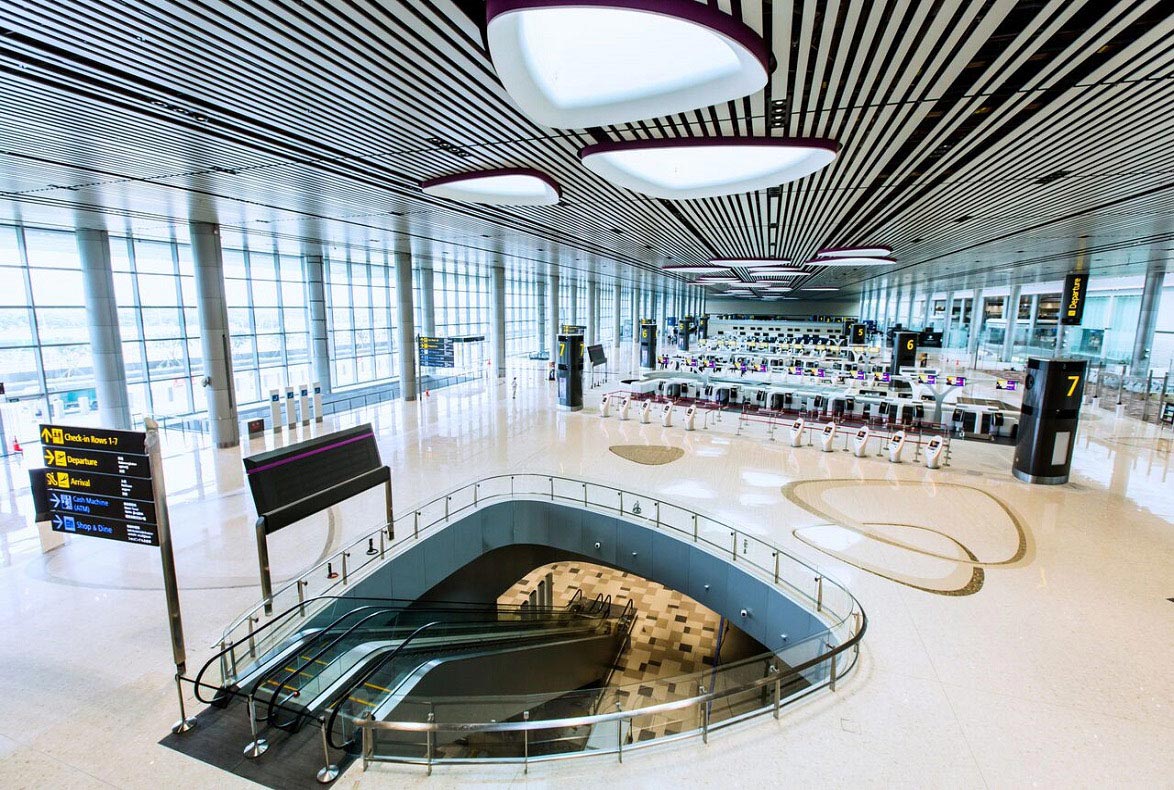* DESIGNER OF
THE YEAR 2015
Dr Colin K Okashimo
Sculptor and Landscape Architect
OKASHIMO Pte Ltd
There is a pragmatic side to the discipline of design that requires the final product to have function, efficiency, even aesthetics. But these features of design are not the primary concern of landscape architect/sculptor Dr Colin Katsumi Okashimo, a Canadian of Japanese descent. “Design needs to be thought provoking. It should have a deeper cause embedded into it since it cannot simply be about solving problems. It needs to question things at a higher level,” he says
Over the years, Colin has designed some intriguing landscapes for hospitality and residential projects across Asia. In recent times, he is known as much for his site-specific sculptures as he is for his landscape architecture. Indeed, when the project permits, art and landscape architecture become one for him. He has achieved this unified state only through a rigorous process that has become the focus of his work over the last two decades. “I have figured out a way to amalgamate sculpture and design through a strong research narrative that speaks about the unique aspect of its location,” he explains.
One recent project that exemplifies this work process is Five Stones, a residential development in Kuala Lumpur. Like most projects of this type, the developer was concerned with maximising the investment potential of the site with high-rise, high-density tower blocks.
When Colin’s research-based firm Colin K. Okashimo and Associates secured the project, he convinced the client that the development needed a communal space as its focus. The task was daunting because as any condominium dweller will attest, social interaction at the community level is rare once residents cross the threshold and enter the privacy of their homes.
However, Colin’s research into the meaning of community spirit in the Malaysian context elicited the notion of ʻplayʼ as a unifying factor. In particular, he examined the children’s game of five stones. This game inspired sculptures with organic forms made of stone, and added a dimension of interactivity to the space by allowing residents to use them as outdoor furniture.
“The idea was to get people to slow down,” Colin says. And the residents of Five Stones do just that, he is glad to report, at least around the sculptures. This reduction in speed aligns with Colin’s perception of his landscape interventions as ʻprovoking calmʼ.
And if the space appears to have a meditative quality, it is probably because every project he designs begins with an on-site ritual of pre-dawn meditation. Explaining this unusual aspect of his design process, he says, “I want to feel the nuances of the site at an intuitive level, without preconceptions, to understand it as it really is, with the creative ideas drawn from the very site itself.”
Calmness in a space is a quality that Colin was not always able to achieve, at least at the beginning of his career. After rising to the top of the corporate world of landscape architecture as chairman and managing director of Belt Collins International, he decided, at the age of 38, to go back to school. “I was taking the business side of work too seriously,” he recalls. So he enrolled himself in the Chelsea School of Fine Arts and Design in London.
Initially, Colin went back to school with the purpose of finding a way to differentiate himself from other landscape architects. But he soon found the practice of art all-consuming as he was forced to look deep within himself to create meaningful work. It was then that he had an epiphany. He realised that the landscape architecture he had been practising for the previous 14 years “may have met functional requirements, but it was not enriching people’s lives in terms of how they might relate to having a meaningful and memorable experience”.
After graduating with an MA in Fine Art in 1996, he decided to set up his own practice in Singapore. With a new raison d’etre, he had to find a different kind of client too. “What I wanted to do was not what a lot of clients wanted,” he recalls.
Fortunately, there were clients who understood his intentions. He began working, at first, on small projects before moving on to much larger projects including resort master planning in Mauritius and Seychelles. He was able to do this after convincing clients that his approach to landscape architecture was more than choosing materials and making allusions to the local context. “If there is no cultural reference, then it’s just another foreign project. That differentiation is what we strive to achieve,” he would tell his clients.
To contextualise each design, Colin would go so far as researching a site’s geological make-up. For the Ephelia Resort in Seychelles, for example, he took the site’s unique geological condition known as a tombolo – where swirling sea currents form a natural bridge between two islands – and used it to generate the resort’s ʻeddies of contemplationʼ, a dynamic landscape inspired by the sea’s movements over centuries.
Increasingly, Colin takes a phenomenological approach to art and design which he describes as “a way of seeing things as they really are”. He researched this notion for his PhD thesis titled ʻArt as Contemplative Place with Reference to the Sited Works of [Japanese-American artist] Isamu Noguchiʼ in 2007 at London’s University of Arts. In particular, he is interested in the notion of ʻphenomenological disclosureʼ as espoused by David Seamon of Kansas State University, Department of Architecture. The results of his endeavours over the years have also been published in his book ʻProvoking Calm: The Artworks of Colin K. Okashimoʼ.
A project is successful when there is clarity within the design and the viewer is provoked into a calm but contemplative state. In that way, he hopes each project transcends landscape architecture and the site becomes, through the personal experience of the user and the power of memory, a ʻplaceʼ. This is the ʻahaʼ moment, says Colin, where the design reveals itself and its many layers slowly over time.
READ MORE
Insights from the Recipient
Citation
Jury Citation
Dr Colin Katsumi Okashimo’s exceptional career spans over 33 years, during which time he has built a reputation for designing outdoor places of contemplation. He represents a new level in the maturity of design in Singapore and the region. As an antidote to the hectic pace of life in cities today, he introduces us to a process that can be best described as ʻSlow Designʼ, a movement like ʻSlow Foodʼ and ʻSlow Citiesʼ that shifts our value system from quantity to quality.
ʻSlowʼ does not mean a glacial pace of development. Instead, the key to Colin’s successful work lies in a refined attempt to introduce feeling and a deeper meaning to design. He strives to introduce every person who engages with the space, an experience of ʻprovocative calmʼ. He describes the ideal client as one who deeply understands the meaning of the place they are activating. He is particularly inspired by the insight that is achieved through meditation and through the value of experiential research.
This inspiration allows Colin to develop an ʻabsence of distractionsʼ, to not over-intellectualise the programme, but to learn from it. The architect Louis Kahn would describe the idea as “becoming what it wants to be”. In the same way, Colin creates content with memory and meaning, space and experience to find a path that unifies the body with mind and spirit.
VIEW JURORSNominator Citation
RONNIE TAN
1ST VICE-PRESIDENT
SINGAPORE INSTITUTE OF LANDSCAPE ARCHITECTS
Dr Colin Katsumi Okashimo’s practice and his body of work reside at the crossroads of master planning, landscape architecture and fine art. Hailing from a background in landscape architecture and fine art, he is a practitioner who has mastered the different disciplines. More than that, he is deeply rooted in the philosophy of integrating sculptural art and storytelling with the design process. His firm is one of the few that still holds fast to the time-proven method of creating physical study models for design research and development. His repertoire of works includes beach resorts in Seychelles and Maldives; boutique hotels, condominiums and residences in Malaysia and Singapore; as well as sculpture commissions across the region.
Colin is one of the pioneer members of the Singapore Institute of Landscape Architects (SILA). The Executive Council and members of SILA hold him in high esteem. We are honoured to nominate Colin for this year’s Designer of the Year Award.












